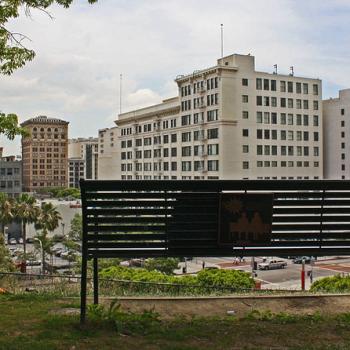
As with many things we talk about, American discussions of COVID-19 seem limited, limited to a set of dull, partisan binaries. Either one stands for reopening things swiftly (if not immediately) or one prizes the lockdown. The former will say the latter are unrealistic—”we must reopen eventually. Get your head out of the sand!” To those in favor of the lockdown, the prophets of return are at worst hicks and at best calculating businesspeople whose imaginations can imagine sacrificing children to Moloch but not a robust social allowance during a pandemic (or a rent freeze, for that matter). Neither of these sides quite seems to “get it.”
Coronavirus does not just go away. You may have heard this said by those interested in reopening the economy, as if the fact that it will remain with us demands that, by tomorrow, I will be able to get my haircut and my callouses pumiced away. We make neat charts—phase one, phase two, phase three, and phase four, as if to imply that, yes, soon all will be safe. Both “sides” do this. “Once we beat this…” as so many of our think pieces begin, masks that we have no idea when or how this will be “beaten.” On the other hand, if we turtle in phase one forever, how and when do we decide that it’s safe to enter phase 2? Even with a wait, there is no prescribed time at which there will simply be “enough” measures to guarantee (or even substantially increase the likelihood) that this virus will not kill me (a young person on immunosuppressant drugs).
Let us take, for example, a report from the American Enterprise Institute, an organization invested both with the faith of our political class and with a love for the principles of free, American government. Their suave, reassuring approach is indicative. Here’s their summary of phase two:
Individual states can move to Phase II when they are able to safely diagnose, treat, and isolate COVID-19 cases and their contacts. During this phase, schools and businesses can reopen, and much of normal life can begin to resume in a phased approach. However, some physical distancing measures and limitations on gatherings will still need to be in place to prevent transmission from accelerating again. For older adults (those over age 60), those with underlying health conditions, and other populations at heightened risk from COVID-19, continuing to limit time in the community will be important.
Public hygiene will be sharply improved, and deep cleanings on shared spaces should become more routine. Shared surfaces will be more frequently sanitized, among other measures. In addition to case-based interventions that more actively identify and isolate people with the disease and their contacts, the public will initially be asked to limit gatherings, and people will initially be asked to wear fabric nonmedical face masks while in the community to reduce their risk of asymptomatic spread. Those who are sick will be asked to stay home and seek testing for COVID-19. Testing should become more widespread and routine as point-of-care diagnostics are fully deployed in doctors’ offices.
While we focus on state-by-state reopening of activities in a responsible manner and based on surveillance data, we note that states may move forward at a county or regional level if these conditions vary within the state and that coordination on reopening among states that share metropolitan regions will be necessary. (“National coronavirus response: A road map to reopening”)
Where to begin? At the beginning, I suppose. When we first became aware of an increasingly large number of COVID infections in the US, my fiancée and I were both either in or near New York City, now the global capital of the virus. What amazes me is just how similar this sounds to the initial response of city authorities. “We will sanitize the trains; wear masks and you’ll be all right.” That quickly proved inadequate—very quickly in fact. The news showed clips every morning of MTA employees in hazmat-adjacent suits scrubbing subway seats with oversized q-tips. That was a bit reassuring until it wasn’t.
Testing, the report suggests, will make the difference. With the right deployment of technology, we might be in a position to limit the spread of the virus and get back to normal like in South Korea and Wuhan. This sounds good, at first anyway. But it’s not quite so simple: for starters, we as Americans are far less accepting of the limitations on civil liberties these sorts of tracking and containment entail. We are a country addicted to the idea of unmitigated personal freedom (in most circumstances anyway). I see little reason to believe that people will immediately (or even in the long-term) go the South Korean or Chinese routes. I don’t say that proudly or happily. I’ve heard these sorts of protests from people I love and respect—they aren’t libertarians; they’re just Americans, and Americans have, perhaps since the Cold War or before, happily defined themselves in terms of the freedom to suffer and die.













